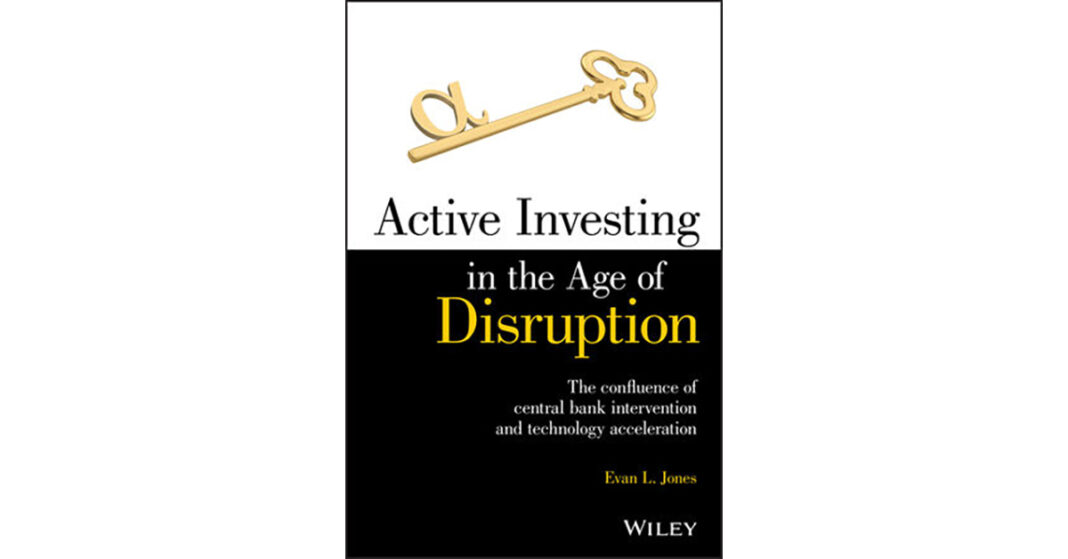Active Investing in the Age of Disruption. 2020. Evan L. Jones. John Wiley & Sons.
Aggressive central bank intervention and accelerating innovation have increased the difficulty of generating alpha from value-oriented, fundamentally driven investing. The author offers well-supported solutions from the advantageous perspective of overseeing direct investments at a major university endowment. He also explains why short-selling skills will be in particularly strong demand in the 2020s.
The game has changed for
value-oriented, fundamentally driven investors. In Active Investing in the Age of Disruption, Evan L. Jones explains
that aggressive central bank intervention has created an upward-trending market
driven by macro issues. Good and bad companies both do well under such
conditions, minimizing dispersion and, consequently, the potential for
investors to generate alpha by selecting strong stocks and shorting weak ones.
This predicament has only intensified since Jones wrapped up the book in
mid-2019, a few months before central banks vastly escalated their market
intervention in response to the COVID-19 pandemic.
Further increasing the difficulty of generating alpha through value-based methods is the accelerating pace of innovation. As Jones notes, there is no reversion to the mean when an industry experiences massive disruption. In addition, start-ups backed with vastly increased venture capital are waiting longer than ever to go public. This dynamic affords them more time to go all-out for market share and to otherwise hurl industries into disarray before coming under pressure to meet quarterly earnings targets.
As he does with several
other theses, the author supports his claim about the heightened risk of
corporate obsolescence with persuasive evidence. In 1960, he recounts, the
average company in the Standard & Poor’s 500 Index had been in business for 60 years. That figure fell to 18 years by 2018 and is
projected to decline to just 10 years by 2030, Jones reports.
Merely describing these challenges would itself be a useful contribution, but the author also offers credible strategies for meeting them, directing his remarks particularly toward hedge fund managers. He speaks with considerable authority on the subject. Jones oversees direct investments at Duke University Management Company (DUMAC), which since 2011 has achieved top-quartile performance within the National Association of College and University Business Officers (NACUBO) Endowment Universe in most rolling-three-year periods. He also teaches entrepreneurship and investing at Duke.
The author’s prescriptions
for extracting alpha in the new environment include portfolio concentration and
focus on such basics of company analysis as pricing power, switching costs,
intangibles, and network effects. Based on his experience, Jones advises
managers to steer clear of trading on short-term market dynamics and to be wary
of rollups and sum-of-the-parts stories. Jones adds that he has rarely if ever
seen fundamentally oriented managers succeed with options strategies or by
trading on short-term market dynamics.
On the career planning front, Active Investing in the Age of Disruption argues that managers who can generate alpha on the short side will be in strong demand during the 2020s. Jones contends that many investment managers have limited skill at shorting or interest in doing the necessary grunt work. They use exchange-traded funds (ETFs) to keep net exposure just low enough to qualify as hedge funds, which command higher fees than long-only funds. Shorts require more intensive analysis than longs, says Jones, and they have the unfortunate trait of increasing as a percentage of net asset value when they are going the wrong way. In this area, his prescriptions include being less concentrated than on the long side and diversifying within short-selling themes.
Jones’s vantage point as a manager of managers brings invaluable insight to the most vital issues facing investment professionals. Too often, investment managers who set out to share their wisdom wind up imposing on their readers’ time by decrying structural changes that threaten their fee income. In contrast, an endowment’s task is not to defend agency costs but rather to maximize its institution’s long-run wealth. Investors who are focused on a similar objective can learn much from this book.
If you liked this post, don’t forget to subscribe to the Enterprising Investor.
All posts are the opinion of the author. As such, they should not be construed as investment advice, nor do the opinions expressed necessarily reflect the views of CFA Institute or the author’s employer.


